AD Reveals the Final Project of Late Design Legend Mario Buatta
Spanning more than five decades, the love affair between Architectural Digest and Mario Buatta was legendary. Ever since his first AD feature appeared in the May/June 1974 issue, there was no place he would rather be published. And the relation-ship extended right up to today, with the careful shepherding of this story into print.
Mario died a few months ago, and this project—an absolute plum—was his last: a glamorous duplex in one of Manhattan’s most iconic prewar buildings overlooking the East River. Not that he would ever admit to favorites, but this client couple was especially beloved. They had worked together umpteen times and could speak together in decorating shorthand. They occasionally disagreed about this or that choice, but “Mario would always win,” the wife says with a laugh, “and he would be right.” Working closely with her to dream up these rooms (or backdrops for living, as Mario thought of them) gave him untold pleasure.
While we were writing Mario Buatta: Fifty Years of American Interior Decoration, Mario and I looked at hundreds of photographs of his work, so I can confidently attest that the end result is quintessential Buatta. It features capaciously plump seating, sumptuous drapery with dressmaker details, a glorious rainbow of color, touches of chinoiserie fantasy, and, yes, occasional bursts of flowered chintz. But there are surprises, too. A mod planetary chandelier centers the blush-pink dining room, which is further loosened up with blue-and-white Indian batik–slipcovered chairs and paisley-embroidered curtains. The entrance hall’s silvered grass cloth and an African motif–inspired printed burlap in a dressing room both also lie outside the expected Buatta canon.
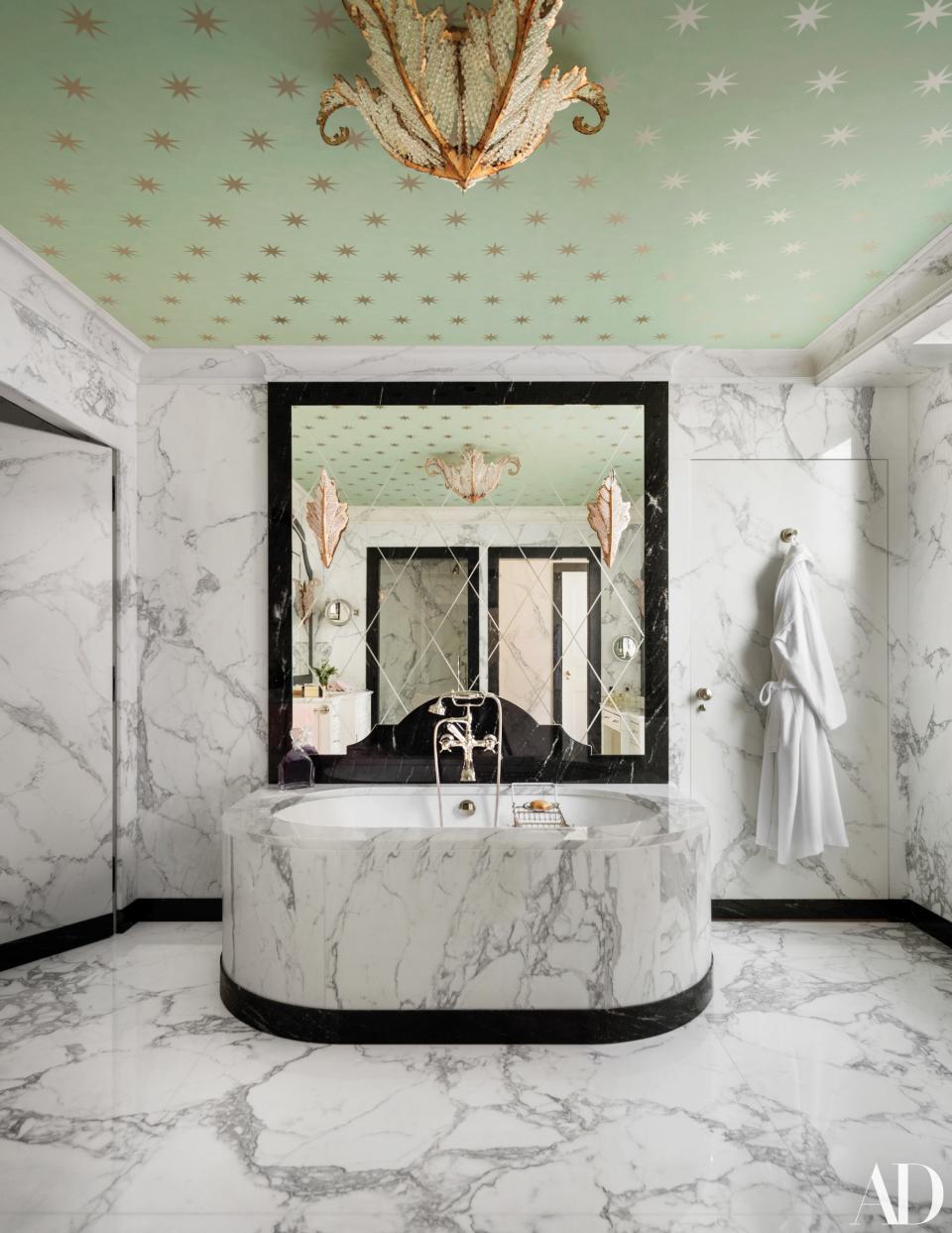
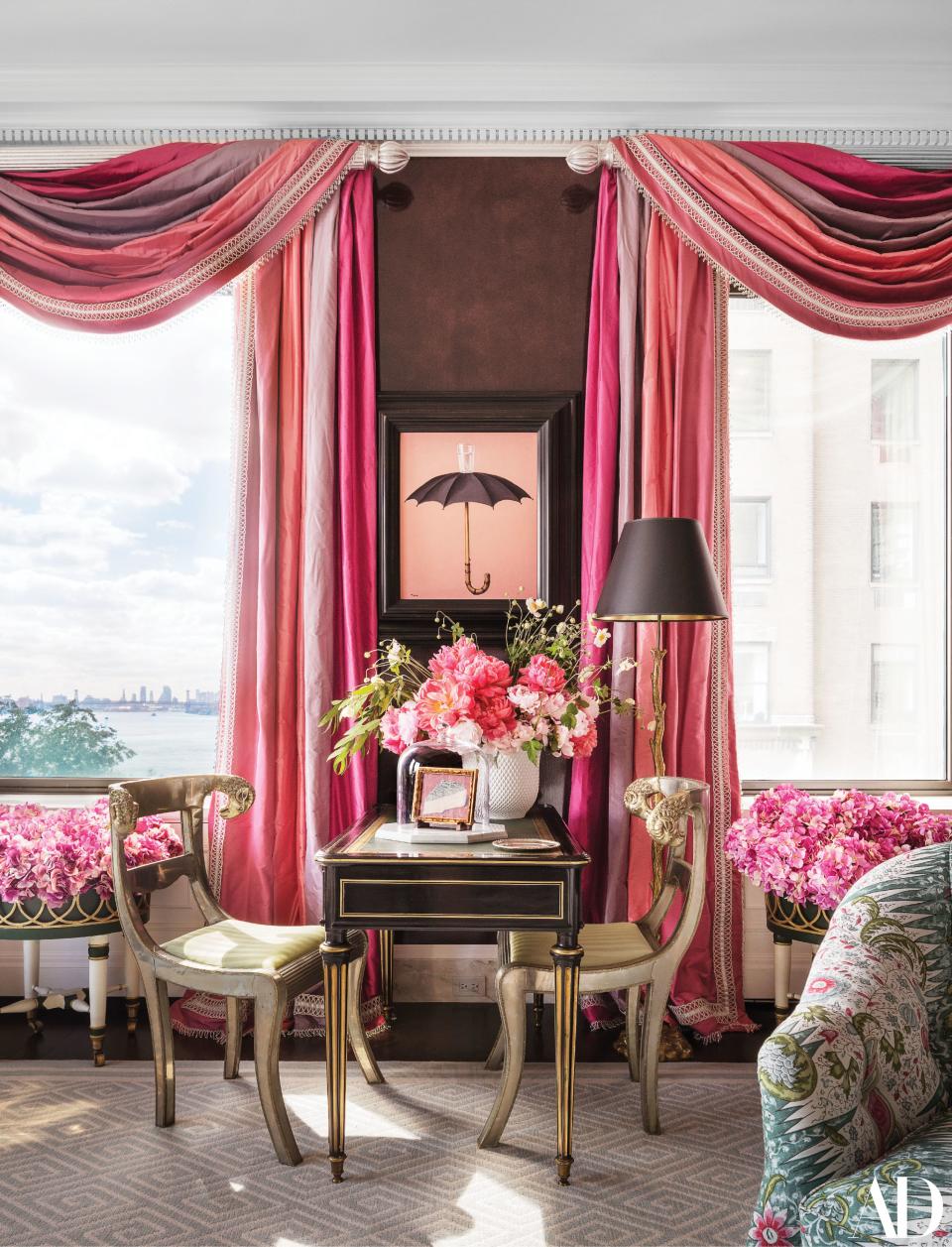
The heart of the apartment is the pulse-quickening aubergine living room. During the day, the deep hue, built up by applying several coats of tinted glaze on a shocking-pink ground, absorbs the dazzling light reflected off the water. By night, it glows in lamplight. The sailboat-print fabric—Quadrille’s Les Indiennes, custom-colored in peony pink, grass green, and pale blue—charmingly nods to the river activity outside. For more intimate gatherings, the owners can retreat to the nut-brown paneled library, where some of their many artworks by René Magritte hang. (Mario loved the room’s self-portrait above all the other pieces in the collection.) The curtains are a signature Buatta design. Their festive pennant valances riff on ones made for the Prince Regent at Carlton House in the 1790s.
It might surprise many to hear how frugal Mario could be on his clients’ behalf. If he could reuse existing furnishings, he did so with relish. When this couple moved into their previous residence, only two new pieces had to be purchased for the sprawling living room. That apartment was sold a few years ago—along with nearly all its contents—and Mario was not pleased. “When Mario found out he had to start over almost from scratch, he was beside himself!” the wife recalls. “Most designers would have found this a dream scenario.”
Judging by these rooms, you would never know Mario was not at his full powers physically. Even during a stint in the hospital, he turned his room into command central, surrounded by mini-mountains of alluring wallpaper and fabric swatches. When not able to access his own library, he would dispatch me to the New York School of Interior Design to bring back books on the Art Deco style for him to study. He reveled in bringing the apartment, which had become mousy and lackluster, back to the jazzy siren it had been when first built in 1931. His focus on the original style culminated in the marble-clad master bathroom, a decorative tour de force with faux marble–painted doors, and the neo-Baroque arch repeated throughout the apartment as doorway openings.
Go Inside the Lush New York Home by the Legendary Designer
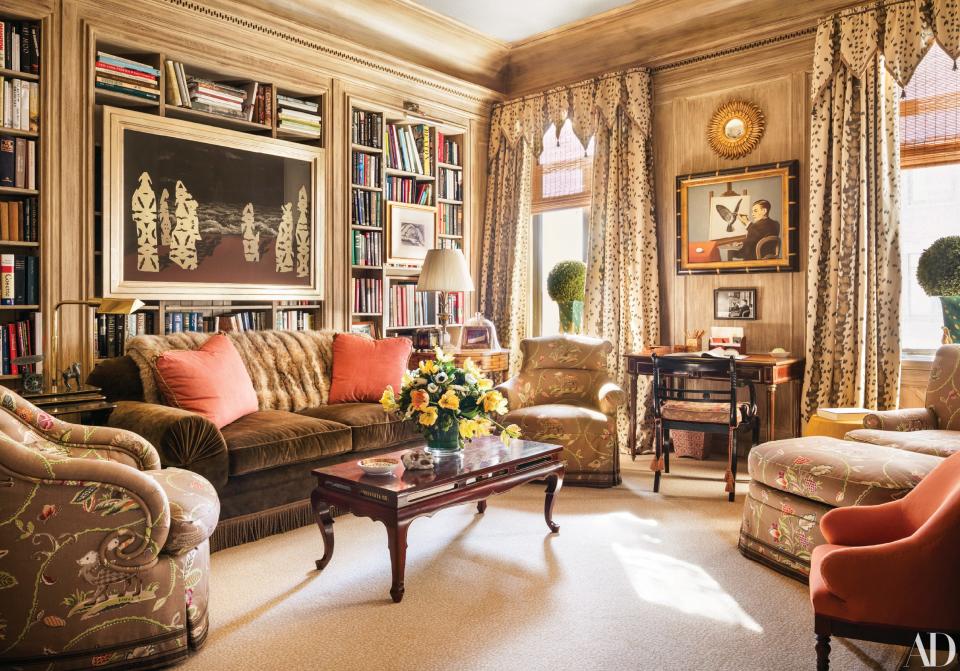
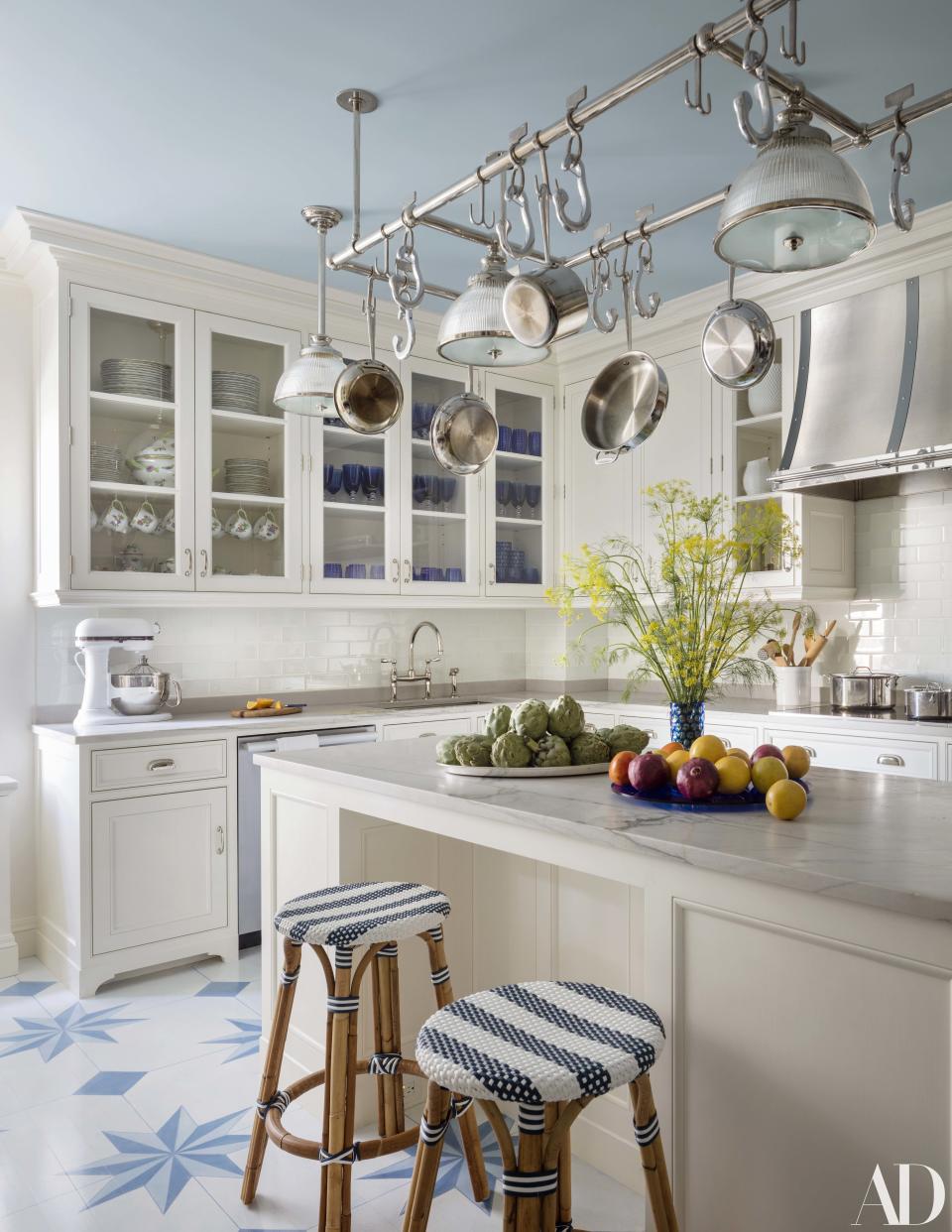
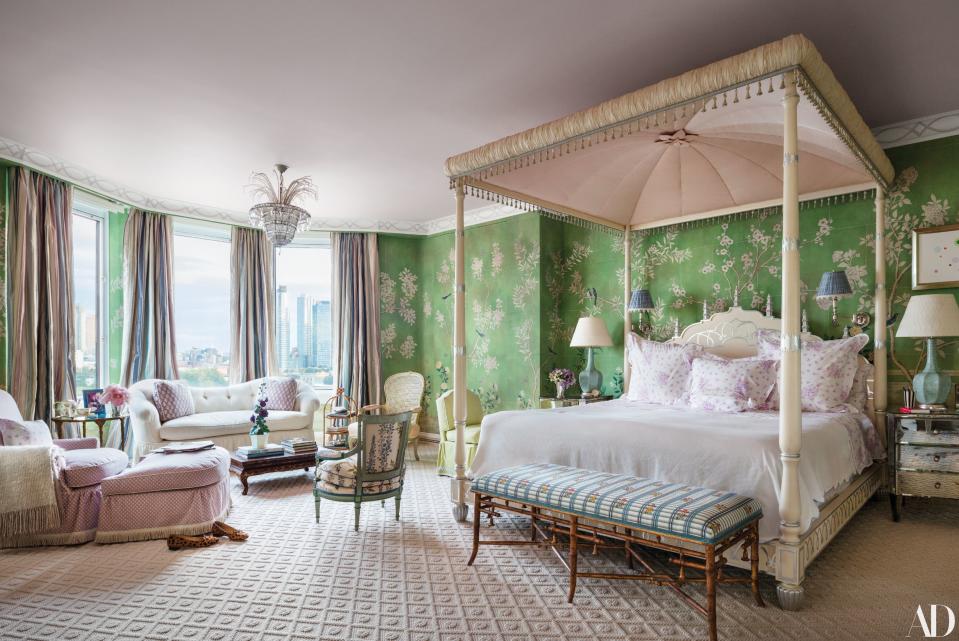
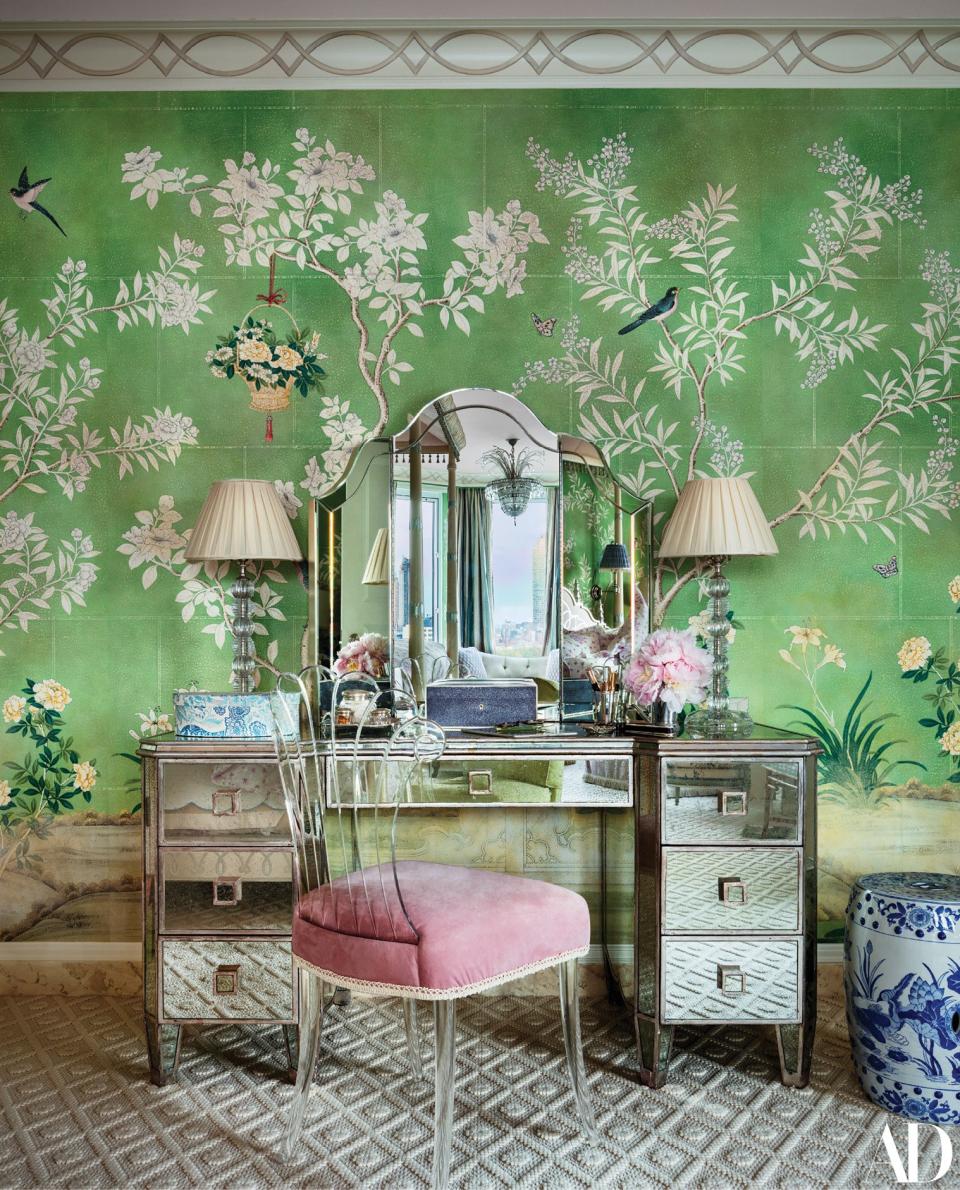

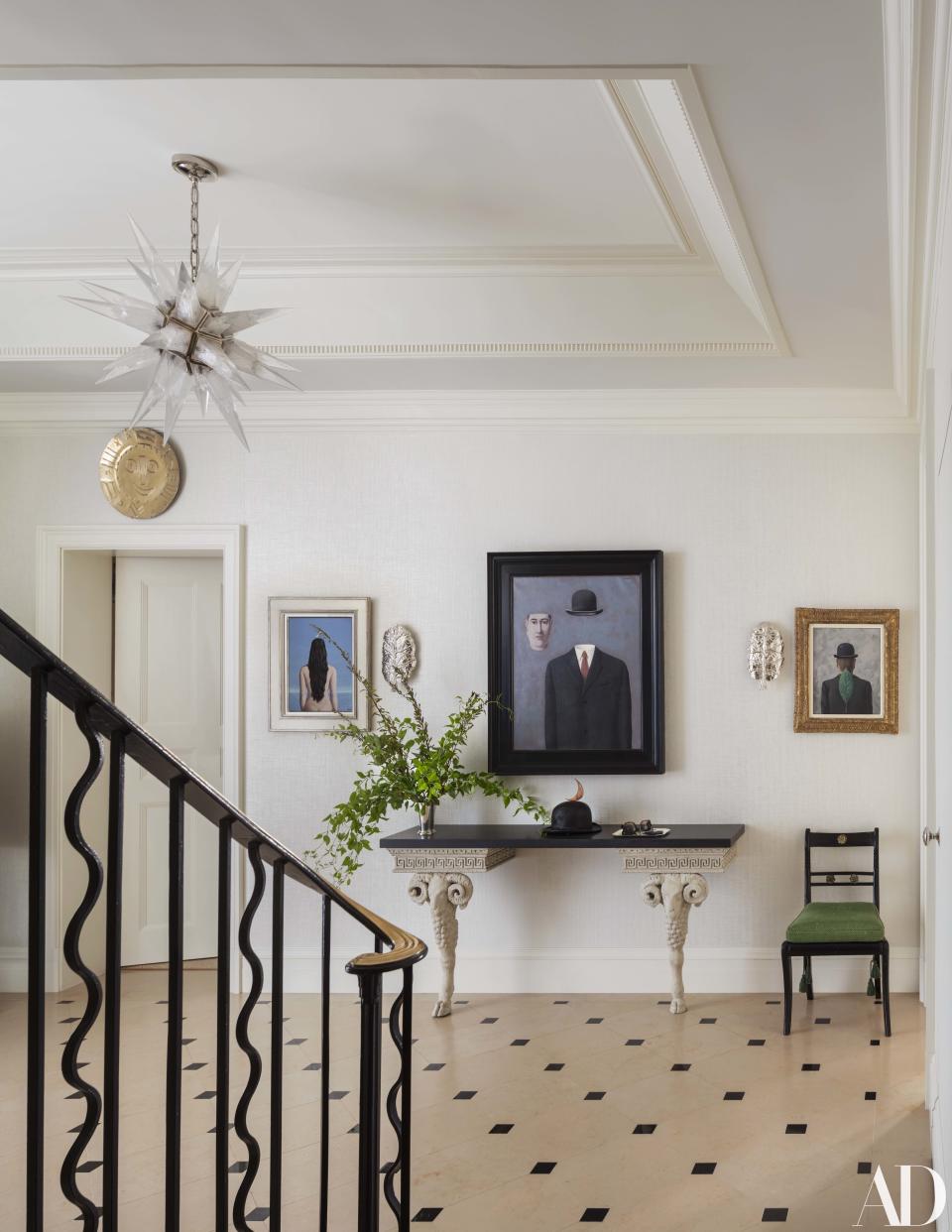



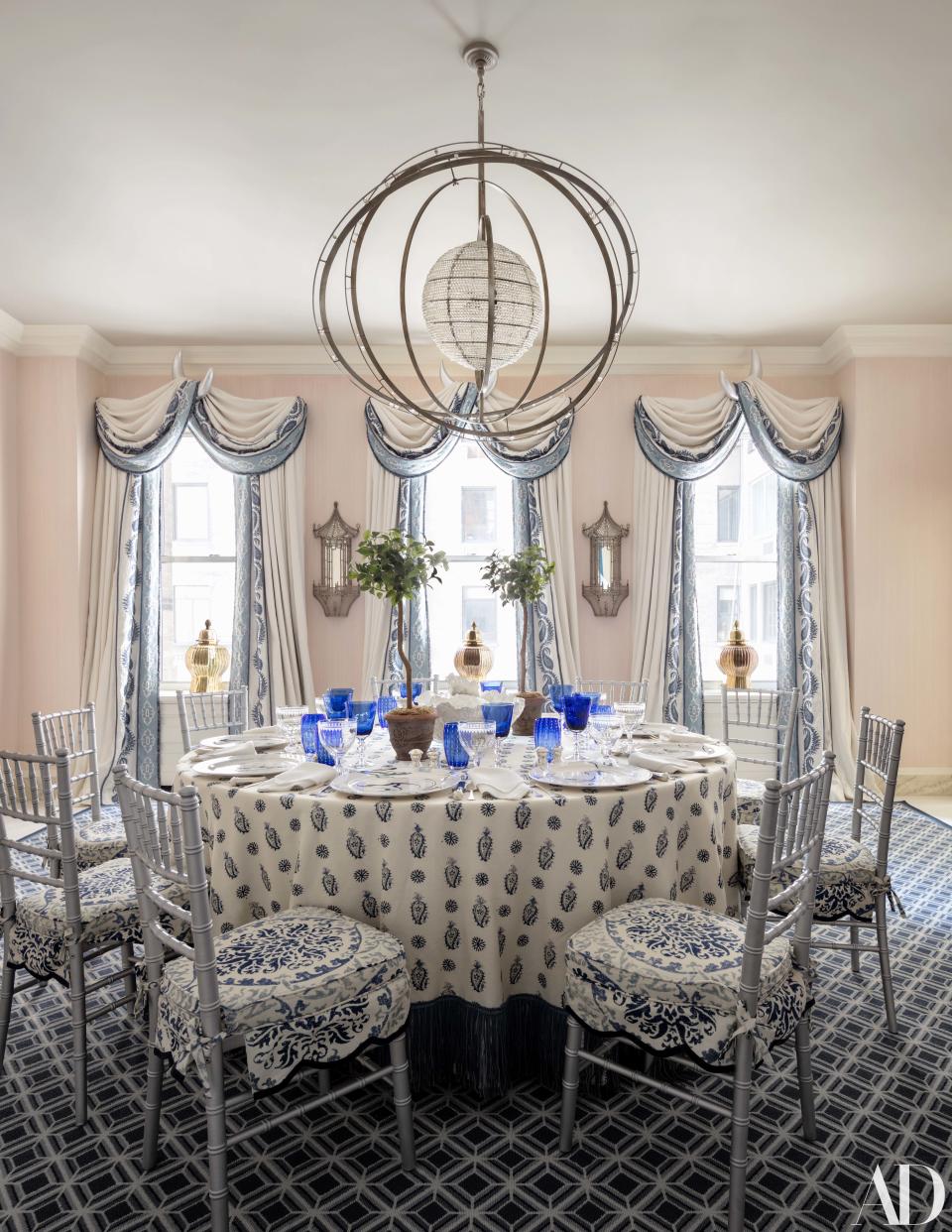
Mario also drew inspiration from his own impressive body of work. Kayel De Angelis of the venerated New York upholstery firm recounts the decorator hauling in his nearly seven-pound monograph to consult while choosing sofas and chairs for the apartment. “While paging through the book with him, I asked who his most difficult client was,” recounts De Angelis. “Without hesitation, he replied ‘Why, me, of course!’ ” This humorous deflection was classic Mario, who never told tales about clients. It was also an acknowledgment of his own demanding nature. Not compromising—whether on his vision or on level of execution—is one of the reasons he was a great.
“Mario was the embodiment of a maximalist; my eye was trained through the lens of Bauhaus minimalism,” recalls photographer Scott Frances, whose relationship with Buatta extends back decades. “We were an unlikely pairing! But our collaboration succeeded because the simplicity of my compositions brought order to Mario’s kaleidoscope of colors and materials, and his deep knowledge of the decorative arts brought romance to my images.”
Mario was absolutely thrilled when AD approached him about featuring this apartment. However, he insisted—vigorously—that it could not be photographed until two child’s chairs returned from the upholsterer. How could they possibly make a difference? I wondered. Days before the shoot, they arrived. When I finally saw them placed in the master bedroom, I said to myself—not for the first time nor, I imagine, for the last—he was right. He was always right.

